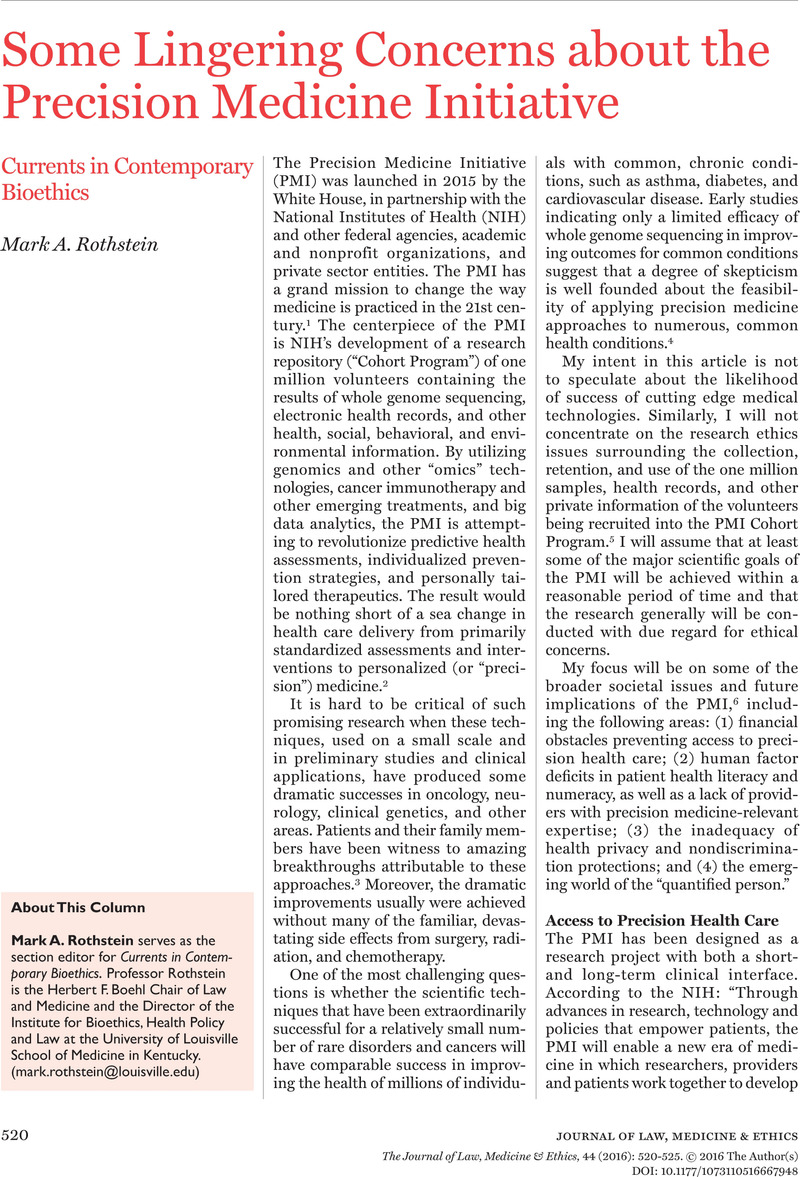Crossref Citations
This article has been cited by the following publications. This list is generated based on data provided by Crossref.
Prince, J. Dale
2017.
Precision Medicine: An Introduction.
Journal of Electronic Resources in Medical Libraries,
Vol. 14,
Issue. 3-4,
p.
120.
Scherr, Courtney Lynam
Feuston, Jessica L.
Nixon, Dawn M.
and
Cohen, Stephanie A.
2018.
A Two‐Phase Approach to Developing SNAP: an iPhone Application to Support Appointment Scheduling and Management for Women with a BRCA Mutation.
Journal of Genetic Counseling,
Vol. 27,
Issue. 2,
p.
439.
Chang, Lin-Chau
and
Colonna, Thomas E.
2018.
Recent updates and challenges on the regulation of precision medicine: The United States in perspective.
Regulatory Toxicology and Pharmacology,
Vol. 96,
Issue. ,
p.
41.
Corwin, Elizabeth
Redeker, Nancy S.
Richmond, Therese S.
Docherty, Sharron L.
and
Pickler, Rita H.
2019.
Ways of knowing in precision health.
Nursing Outlook,
Vol. 67,
Issue. 4,
p.
293.
Mahant, Vijay
2020.
“Right-to-Try” experimental drugs: an overview.
Journal of Translational Medicine,
Vol. 18,
Issue. 1,
Rothstein, Mark A.
2020.
Predictive Health Information and Employment Discrimination under the ADA and GINA.
SSRN Electronic Journal ,
Sun, Shirley
2020.
Between personalized and racialized precision medicine: A relative resources perspective.
International Sociology,
Vol. 35,
Issue. 1,
p.
90.
Galasso, Ilaria
2024.
Precision Medicine for Whom? Public Health Outputs from “Genomics England” and “All of Us” to Make Up for Upstream and Downstream Exclusion.
The American Journal of Bioethics,
Vol. 24,
Issue. 3,
p.
71.





